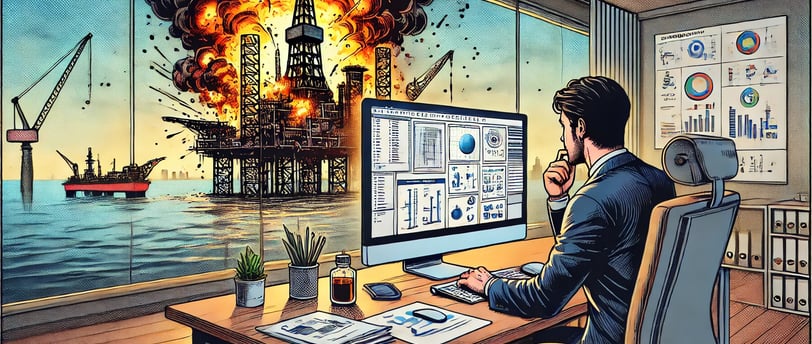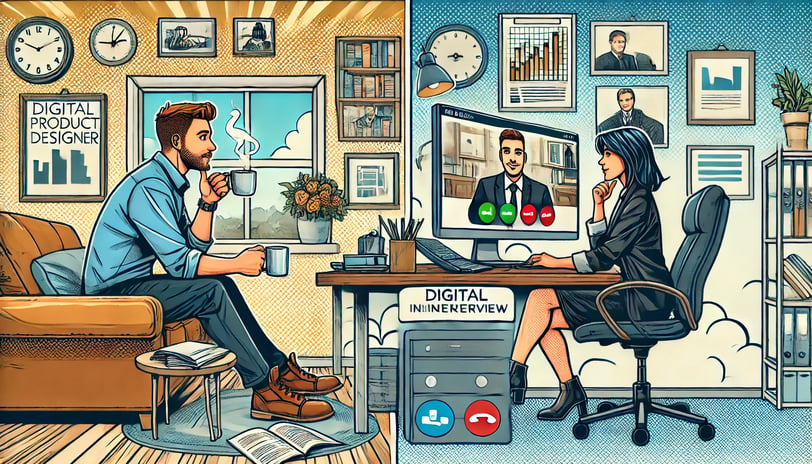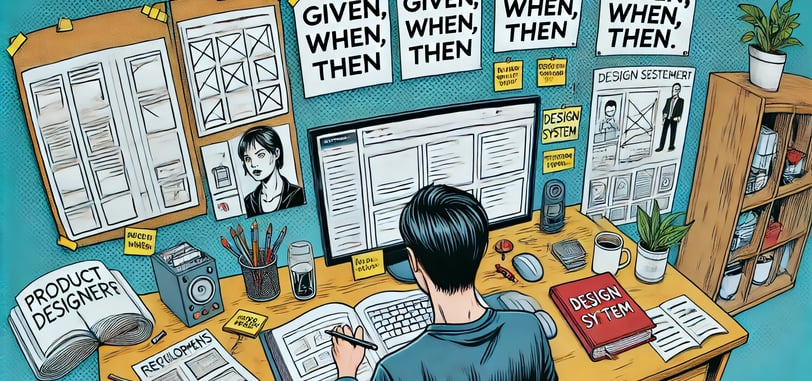What does a product designer do in IT?
Do they do UI and UX? Do they manage? Do they write code? Do they dance in the summer rain to appease the design gods?
DESIGNDESIGN MANAGEMENTMANAGEMENTPRODUCT DESIGNUI DESIGNDESIGN PROCESSAPPWFHWORK CULTUREREMOTE WORKUX DESIGN


A little bit of everything
The expectation is for this designer to do everything, because why not. It's what the market has come to expect. The market knows only what we tell them.
When you are starting out in design you usually don't know what you like doing. You can think you like UI but discover you like UX. The point is you are starting out and you want to explore what you can do. Now you cannot expect a person starting out to be able to take an idea and craft it into a product.
Crafting products takes knowledge, it takes multiple disciplines, and takes more than one person. It takes a team to create a product. Sure you can use "ai" but I would recommend using such tools only to speed up testing.
In one of the projects that I had to do for BP - British Petroleum I was dropped in as a tactical one-man army. What that meant was they dropped me in and told me we have an issue with a low adoption rate for this software. We want to increase the adoption rate. The web app in question was made for reliability engineers. It was made but without a product designer. It is made by managers. The purpose of the app was for engineers to asses anomalies and risks on offshore platforms. After assessing they should write reports on what to do next. This then influences whether the company loses millions or not.
Imagine if the engineer cannot use the full data set because the software is unusable. Due to that, they make a mistake and something breaks or explodes on the rig. Or a pump breaks down, they don't switch to the other one in a proper way. The second pump also breaks. There would be huge losses.
That seems like a simple ask and this is where the product designer experience kicks in. To improve something you need to discover why it's not performing as expected. Without that initial information, you cannot form a plan.
Interviews and testing
Anybody can do interviews. That is a true statement but if not done properly you will end up getting answers that can't help you. That is why it's important that you have a proper designer conducting interviews.
I started interviewing reliability engineers and their superiors. Integrity engineers were on the list as well. Engineers are smart people. They were told by management they needed to use the app to record the data. But since the app was unusable and lacked the functions they wanted they had a workaround.
They would do all the work via spreadsheets, multiple tabs, and their own processes. Now this makes it prone to errors and hard to use. I talked with a recently onboarded engineer and she was telling me that a competitor company had an all-in-one solution. She told me this was really hard to grasp, and showed me how she was taught to do things.
I was given access to spreadsheets, pdf instructions, etc. I got access to the app itself to test and analyze. So a part of the product designer's job in this particular job was to assess the situation. Discover the issue, propose a solution, and manage it.
Interviews can be used in different ways. I started with discovery interviews to map out the work. To map out a job to do on a daily.
After the mapping, I had an idea of what they were doing and I could see clusters of issues. I then went through their workflow to see what kind of issues I could find step by step.
After doing my own analysis, I went ahead and crafted an interview script for usability testing. The usability testing is explained by the name. You test the usability of a product. The usability testing showed me patterns of problems. I also had a baseline on how long it takes them to do certain things.
Now, up to this point, I have been passive in meetings with stakeholders. After finding problems I had to present those issues and schedule a prioritization workshop. The stakeholders were not just people from high up, they also included engineers who would use the app.
Now I draft some wireframes and see how they hold up. After running some preliminary testing with a few engineers I decided to go ahead with the creation of a prototype. See creating a prototype can be a hassle. Some people will say it is best to use low-fidelity designs etc. I think the best way to test a prototype is to do it. Do it with any means that you have.
I usually document my work in MIRO, I even create wireframes there. I prefer it to Figma because of the lack of visual design. Helps me focus. I also use JIRA or similar project management tools.
I had a developer available to me and he crafted the prototype based on my wireframes. I then went ahead and tested the prototype with 10 engineers. Their feedback was positive. The prototype vs baseline on their main tasks was a difference of 300%. With that feedback and data backing my prototype I went to the stakeholders and proposed it. They agreed.
This is not where the story ends though. My prototype was testing 5 different main tasks. They had many more but we did not have time to create a larger prototype. So I wanted to finish my wireframes for the rest of the app, to enable them to complete the project without me there. Due to budget and time constraints, I could not develop all the wires.


What else?
During a project, you will always have more work that goes over budget and timeline. Its important that your designer has enough experience to know what he can accomplish within the timeframe.
With my prototype, I solved about 20% of the issues I discovered. My wireframes covered about 60%. To ensure the developers knew what I wanted to happen on each screen I had to write up the requirements.
Given, When, Then.
This is a template a developer friend taught me. For each action, you write expectations. You also map this out for project management so it's easier to track. I was also tasked with epic creation that covered almost a year in advance. The developers are supper happy when they get the wires, design system, and "given when thens".
See nowhere here was a UI designer, everything was done with tools that enabled low-fidelity testing. Because of that, you do not have managers saying I don't like this color or similar. During early development, you do not need high def designs.
Since I could not develop all the wireframes I did a workshop with the stakeholders. I crafted a template for them to fill out for each screen before hand off to developers.
Conclusion
A product designer should be able to turn your idea into a functional product.
A product designer is crucial in turning ideas into functional, user-friendly products. They bridge the gap between the user and the development team. They ensure that the final product not only looks good but also works as intended. From conducting thorough research and analysis to creating prototypes and collaborating with stakeholders, a product designer’s role is diverse and indispensable.
Suppose you have an idea for a new product or need to improve an existing one, a product designer can make all the difference. Don’t hesitate to reach out for professional assistance to ensure your product meets user needs and stands out in the market. Feel free to contact me for any design needs or schedule a call to discuss your project further.


